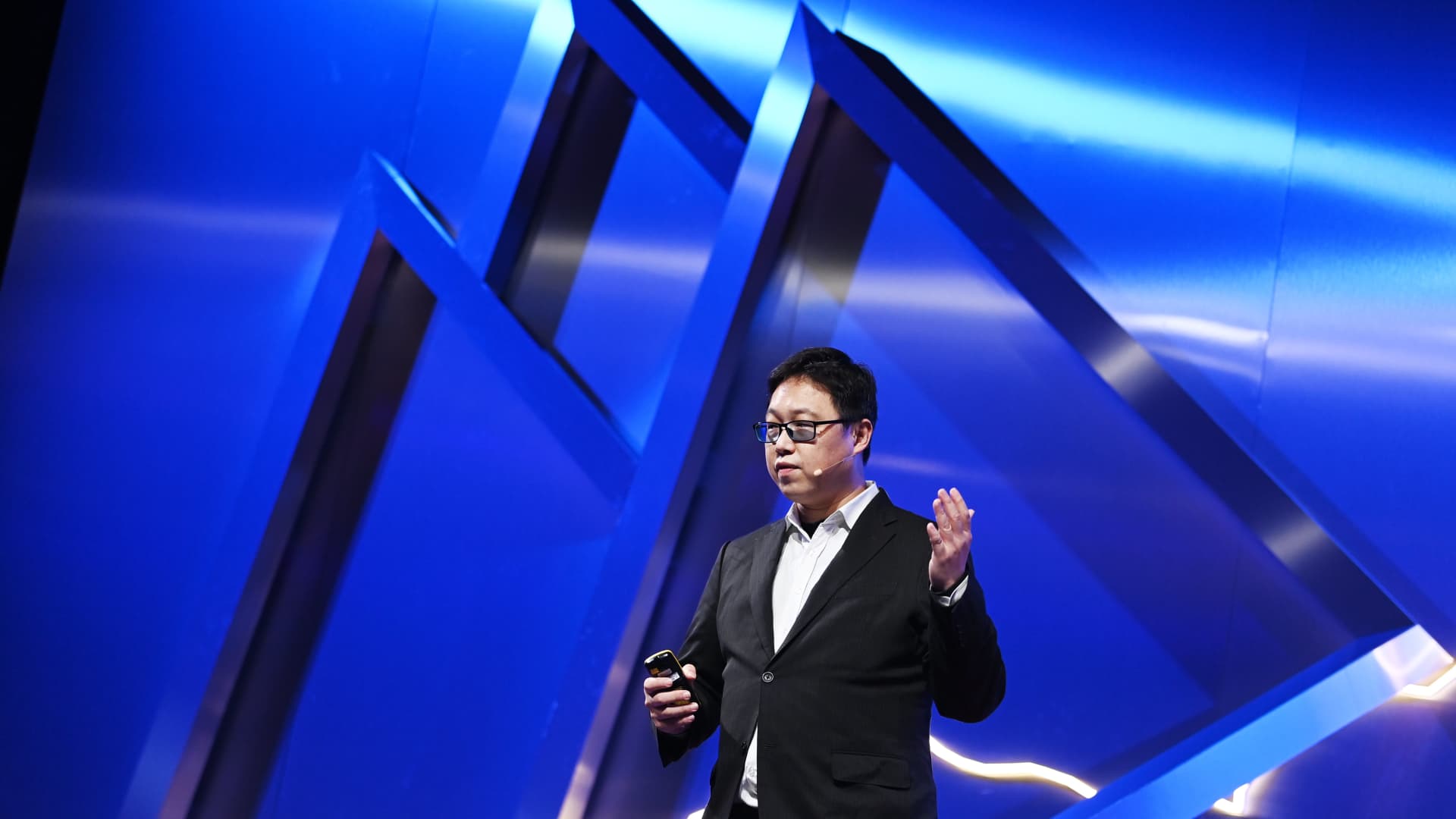Albert Liu, founder and CEO of Kneron.
Harry Murphy | Sportsfile | Getty Images
Kneron, a U.S.-based semiconductor startup, said on Tuesday it raised a fresh round of funding as it looks to ramp up the commercialization of its artificial intelligence chips, which it hopes will rival Nvidia’s.
The company said it raised an additional $49 million, bringing its total round of funding to to $97 million.
Taiwanese giant Foxconn, the company that assembles Apple’s iPhones, and Alltek, a communications tech company, were among the investors in the round.
Kneron is looking to capitalize on massive investor interest in artificial intelligence and the chip technology that underpins it — underscored by Nvidia’s 180% rally this year and the initial public offering of semiconductor designer Arm in the U.S. last week.
Nvidia makes graphics processing units, or GPUs, which run in servers and data centers and can handle the massive computing power required to use huge amounts of data to train artificial intelligence systems. Many AI services today, such as ChatGPT, are run from the cloud.
In contrast, Kneron designs a chipset that goes into devices like consumer electronics and cars that allow AI on the “edge.” That means AI runs on a device rather than in the cloud. Advocates say this is better for security and speed as the AI application doesn’t need to come from the cloud.
Kneron calls its semiconductors neural processing units, or NPUs. Its latest product is called the KL730. This chip is designed for cars and the company says that it can be used to support autonomous driving.
“With this tranche in funding, Kneron is specifically focused on expanding its efforts in enabling AI to make autonomous driving a reality,” Kneron said in a press release.
Kneron has no shortage of competitors from giants like Qualcomm and MediaTek — which are aiming for on-device AI with their chips — and startups developing AI semiconductors.
Foxconn’s semiconductor push
Kneron has managed to get some high-profile backers on board. Foxconn is one of the more interesting ones, given its push to diversify away from just assembling electronics like the iPhone into areas such as electric cars and semiconductors.
As part of Foxconn’s investment in Kneron, the two companies will “accelerate the deployment of advanced AI” for automotive and other areas. They will develop “an ultra-lightweight AI chip that operates” so-called generative pre-trained, or GPT, models from the cloud. GPT models underpin AI applications like ChatGPT.
But Foxconn’s foray into semiconductors so far has been rocky. Last year, it agreed with Indian metals-to-oil conglomerate Vedanta to set up a semiconductor and display production plant in India as part of a $19.5 billion joint venture. But Foxconn pulled out of that venture earlier this year, underscoring the difficulties of cracking the microchip market.
Image and article originally from www.cnbc.com. Read the original article here.

